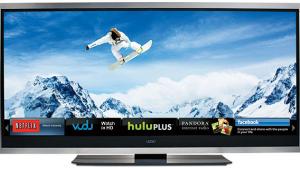Samsung QN65QN90A NEO QLED LCD Ultra HDTV Review Test Bench
The measurements here were made manually using Calman measurement software from Portrait Displays (www.portrait.com) together with a Klein K-10A color meter and a Fresco Six-G test pattern generator from Murideo/ AVPro.
Just prior to performing calibrations, my aging Photo Research PR-650 spectroradiometer bit the dust. My measurements are typically made with the Klein colorimeter, but since the latter is less accurate on color it must first be "profiled" against a more precise device such as the PR-650. With the latter unavailable pending a replacement, I used a saved profile taken in the recent review of TCL's 65R635, chosen because it's similar to the Samsung in that both are VA (Vertically Aligned) LCD TVs that employ Mini- LEDs and Quantum Dots.
While I would expect that other differences might render the calibrations here less precise than usual, nothing in the measured results or subjective viewing suggested that the Samsung's final color performance was skewed in any significant way. Moreover, the Klein is not dependent on profiling for any result involving image brightness, such as contrast ratio or peak light output.


HD/SDR
FULL-ON/FULL-OFF CONTRAST RATIO: unmeasurable
In the Movie picture mode with the Brightness control at 27, Contrast at 25, and Local Dimming at Standard (the default), the measured 100% peak white level after calibration on a 10% white window was 185 nits (54 foot-lamberts). A full black screen was unmeasurable, rendering the Full-On/ Full-Off Contrast Ratio also unmeasurable.
(The Delta Es that follow show a figure of merit as to how close the color comes to the D65 HD or Ultra HD standard at each point in the brightness range. Values below 3 are generally considered visually indistinguishable from ideal.)
In Movie mode with the Warm2 Color Tone and Auto Color Space Settings selected, the pre-calibration grayscale Delta E was a minimum of 1.78 at 20%, increasing steadily to 6.36 at 100%. The maximum color Delta E was 3.29 for red. After calibration, the grayscale Delta E was a maximum of 1.70 at 70% and under 0.86 elsewhere, and the color Delta Es were all under 1.53 (blue). Gamma was 2.4. Post-calibration sweeps from 20% to 100%, at 20% levels, resulted in an average Delta E value of 1.26 and a maximum of 3.7 (the latter in blue at 80%). A color checker run, measuring a wide range of real-world colors, averaged 1.7 with a peak of 3.5 (in pure 100% blue).
The Samsung's input lag measured using a 1080p Leo Bodnar test device was 82ms in Movie mode and an excellent 9.4ms in Game mode.
Ultra HD/HDR
FULL-ON/FULL-OFF CONTRAST RATIO: 172,500:1
In Filmmaker mode with Brightness and Contrast both set to 50 (default), Gamma at BT.2084, Local Dimming at High, the peak white level on a 10% white window, post-calibration, measured 1,449 nits at 100% (83.4 nits at 50%), and the black level 0.0084 nits—the latter the average of 9 readings (11 total with the lowest and highest discarded).
With Warm2 Color temperature and the above basic settings selected, the pre-calibration grayscale Delta E hit a maximum of 8.1 (90%) and the color Delta E 5.0 (Blue). After calibration, the grayscale Delta E exceeded 2.8 (at 80%) at only one point (4.4 at 70%). The color Delta E measured 3.3 in yellow, but other colors never exceeded 2.5 (in magenta).
A color checker analysis, which measures the accuracy of dozens of different colors, resulted in average Delta Es of 2.66 (5.82 max) with luminance and 1.87 (5.34 max) without.
The post-calibration peak white level (100%) measured 1,040 nits on a 2% white window, just under 1,500 nits on a 10% white window, 1,000 nits in a 50% window, and 700 nits with full-screen 100% white pattern. As with all TVs, the latter level will be reduced by the set's ABL (automatic brightness limiter) as needed to protect against overdriving the screen, though this occurs less rapidly than on an OLED and should be rarely visible with real-world sources.
Color saturation and tracking were good for DCI-P3 (within a BT.2020 color space), and very good for BT.709 (within the same BT.2020 space), with The QN90A reaching 92.7% of DCI-P3 and 71.6% of BT.2020 (using the 1976 standard for both).—TJN




























































